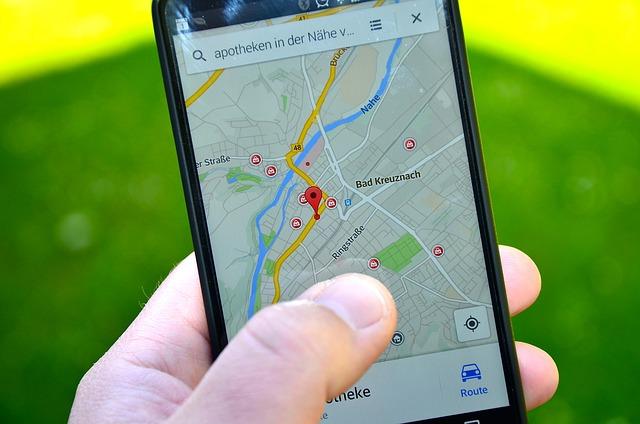How Technology Advances Indoor Location Tracking Capabilities
The rapid evolution of technology has transformed numerous aspects of our lives, and indoor location tracking is no exception. Once limited to rudimentary applications, this innovative field has blossomed into a sophisticated system integral to various industries. From retail to healthcare, the advances in indoor location tracking have revolutionized how businesses operate and enhance user experiences. This article explores the latest technological developments in indoor location tracking, highlighting the role of Bluetooth beacons, Wi-Fi positioning, and Ultra-Wideband (UWB) technology.
Enhancing Precision and Versatility
Bluetooth beacons have become a cornerstone in indoor location tracking, offering precise and versatile solutions. These small, low-energy devices transmit signals that can be picked up by Bluetooth-enabled devices like smartphones. Retailers have harnessed this technology to enhance the shopping experience by directly providing personalized promotions and product information to customers' phones as they navigate through stores. This not only boosts customer engagement but also provides valuable data on shopping patterns and behaviors.
Healthcare facilities also benefit significantly from Bluetooth beacons. For instance, they are used to track the movement of medical equipment and personnel, ensuring that critical tools are available when needed and reducing the time spent searching for devices. Additionally, Bluetooth beacons can help in emergency situations by guiding patients and visitors to exits or safe zones. The flexibility and cost-effectiveness of Bluetooth beacons make them a popular choice for various applications, pushing the boundaries of what indoor location tracking can achieve.
Leveraging Existing Infrastructure
Wi-Fi positioning systems (WPS) take advantage of existing Wi-Fi infrastructure to provide accurate indoor location tracking. This approach utilizes the signal strength of Wi-Fi access points to triangulate the position of devices within a building. One of the main advantages of WPS is its ability to integrate seamlessly with existing networks, making it a cost-effective solution for businesses and institutions looking to implement indoor tracking without significant additional investment.
In large venues such as airports, convention centers, and shopping malls, Wi-Fi positioning can guide visitors through complex layouts, helping them find their way to specific locations such as gates, booths, or stores. This not only improves the visitor experience but also enhances operational efficiency by reducing the need for physical signage and personnel assistance. Furthermore, WPS can support applications in security and asset management, offering real-time tracking of valuable assets and ensuring they are located where they are needed most.
Pushing the Boundaries of Accuracy
Ultra-wideband (UWB) technology represents the cutting edge of indoor location tracking, known for its exceptional accuracy and low latency. Unlike Bluetooth and Wi-Fi, UWB uses a broad frequency spectrum, enabling it to deliver precise location data within centimeters. This level of accuracy opens up new possibilities for applications where precision is critical, such as in manufacturing, robotics, and autonomous systems.
In manufacturing, UWB can track the exact location of tools, parts, and products on the production line, ensuring seamless operations and minimizing downtime. Robotics and autonomous vehicles benefit from UWB's precision to navigate complex indoor environments safely and efficiently. Moreover, UWB technology is increasingly being integrated into smart home systems, where it can track the movement of individuals within a home to automate lighting, climate control, and security systems, enhancing both convenience and safety.
Integrating Technologies for Optimal Performance
The future of Indoor Location Tracking and Positioning lies in the integration of multiple technologies to achieve optimal performance and reliability. Combining Bluetooth beacons, Wi-Fi positioning systems, and Ultra-Wideband technology can create a robust hybrid system that leverages the strengths of each method. For instance, in a large retail environment, Bluetooth beacons can provide personalized customer interactions, Wi-Fi positioning can offer general navigation, and UWB can ensure precise tracking of high-value items. As explained by experts from Pozyx, this integrated approach not only enhances accuracy and coverage but also increases resilience against signal interference and obstacles that are common in indoor environments. By harnessing the synergies between these technologies, businesses can create comprehensive indoor location-tracking solutions that deliver seamless, efficient, and user-friendly experiences across various applications.
AI and Machine Learning in Indoor Location Tracking
Artificial Intelligence (AI) and Machine Learning (ML) are becoming pivotal in enhancing indoor location tracking systems. These technologies analyze vast amounts of data collected from various sensors and devices to improve accuracy and predict user behavior. By employing AI and ML algorithms, systems can dynamically adjust to changes in the environment, such as the movement of large crowds or the introduction of new obstacles. This adaptability ensures that location data remains reliable and accurate in real time. For example, in a smart building, AI can optimize HVAC and lighting systems based on the precise location and number of occupants, leading to energy savings and improved comfort.
Security and Privacy Concerns in Indoor Location Tracking
As indoor location tracking technology advances, it raises significant security and privacy concerns. The collection and use of location data can be sensitive, and ensuring that this information is protected from unauthorized access is crucial. Businesses must implement robust encryption methods and adhere to strict data protection regulations to safeguard user privacy. Additionally, transparent policies on data usage and clear opt-in mechanisms can help build trust with users. By addressing these concerns proactively, companies can leverage indoor location tracking technologies while maintaining the confidence and security of their customers.
The evolution of indoor location tracking technology, driven by innovations in Bluetooth beacons, Wi-Fi positioning, Ultra-Wideband, AI, and Machine Learning, has significantly expanded its applications and capabilities. These advancements offer precise, reliable, and versatile solutions for various industries, from retail to healthcare to smart buildings. However, it is essential to address security and privacy concerns to ensure user trust. As these technologies continue to develop, they will undoubtedly play an even more integral role in enhancing our interactions with indoor environments, leading to improved efficiency, safety, and user experiences.

